
Tragedy often exerts a subtractive centrifugal force on a family, spinning apart and severing the bonds of those who remain. Often, but not always.
Take what happened after the ground breaking artist Mary Ann Unger died in 1998, leaving behind her husband, the photographer Geoffrey Biddle, and their daughter Eve Biddle, then 16.
“We could have dumpstered everything,” Eve says of the nearly 1,000 artworks that her mother left-behind after a 14-year battle with cancer that began when Eve was a toddler. “Looking back, that was in some ways a legitimate option, but it wasn’t for Dad. It wasn’t for me.”
Instead the duo engaged in what Eve calls a “total act of faith” that Mary Ann’s colossal sculptures, patterned watercolors, and delicate drawings “deserve attention in the art historical conversation.”
One such conversation is happening at the Whitney Museum, where Jennie Goldstein has curated “In the Balance: Between Painting and Sculpture 1965–1985,” which runs through March 23. The exhibition places Unger in context with peers whose work, like hers, danced between two- and three-dimensionality, such as Judy Chicago, Alma Thomas, and Dorothea Rockburne.
Neither Unger’s inclusion in that show nor the museum’s posthumous acquisition of six of her artworks would have happened if, several years ago, Eve hadn’t invited the Whitney to consider an artist with whose work Goldstein admits she was “unfamiliar.”
Esta historia es de la edición March 2023 de Town & Country US.
Comience su prueba gratuita de Magzter GOLD de 7 días para acceder a miles de historias premium seleccionadas y a más de 9,000 revistas y periódicos.
Ya eres suscriptor ? Conectar
Esta historia es de la edición March 2023 de Town & Country US.
Comience su prueba gratuita de Magzter GOLD de 7 días para acceder a miles de historias premium seleccionadas y a más de 9,000 revistas y periódicos.
Ya eres suscriptor? Conectar

Wake Up and Smell the PALM TREES
In Palm Beach, second homes are the new first homes. For Tommy Hilfiger, Coral House is much more. After 40 years of running a fashion empire, he's shifting gears and staying put for a while.
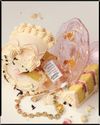
Bite Me!
Perfumes with sweet notes of vanilla, cocoa, caramel, and honey are a guilt-free indulgence. Join us in the dining room, won't you?
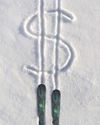
Battle for the Soul of SKIING
Lift lines are interminable and slopes are packed. Meanwhile, wealthy resort owners have been making their mountains semi- or entirely private. Can the original gonzo-glamorous sport survive its new highs and lows?

Kingdom Come
Kelly Reilly has become a sensation for her turn as Yellowstone's Beth Dutton, the deliciously wicked daughter of a Montana cattle baron. Now, as the family saga reaches its dramatic finale, the actress is ready to shed her alter ego. Or is she?

Town? Country? YES.
A new Charleston hotel makes it plain: This place is made for traveling, happily between worlds.
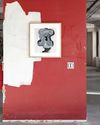
Escape from the WHITE BOX GALLERY
Art collectors, stifle your yawns and
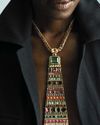
Escape to WHERE TOURMALINES SPEAK LOUDER
Desperate to mute quiet luxury?

Escape WORTH AVENUE
Can't stomach yet another lunch at BiCE?

Escape to THE MIND OF ELSA
Are you over every influencer wearing, the same uninspired trinkets?
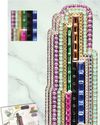
Escape to SOMEWHERE OVER THE RAINBOW
Are you ready for lapels featuring something other than political posturing?